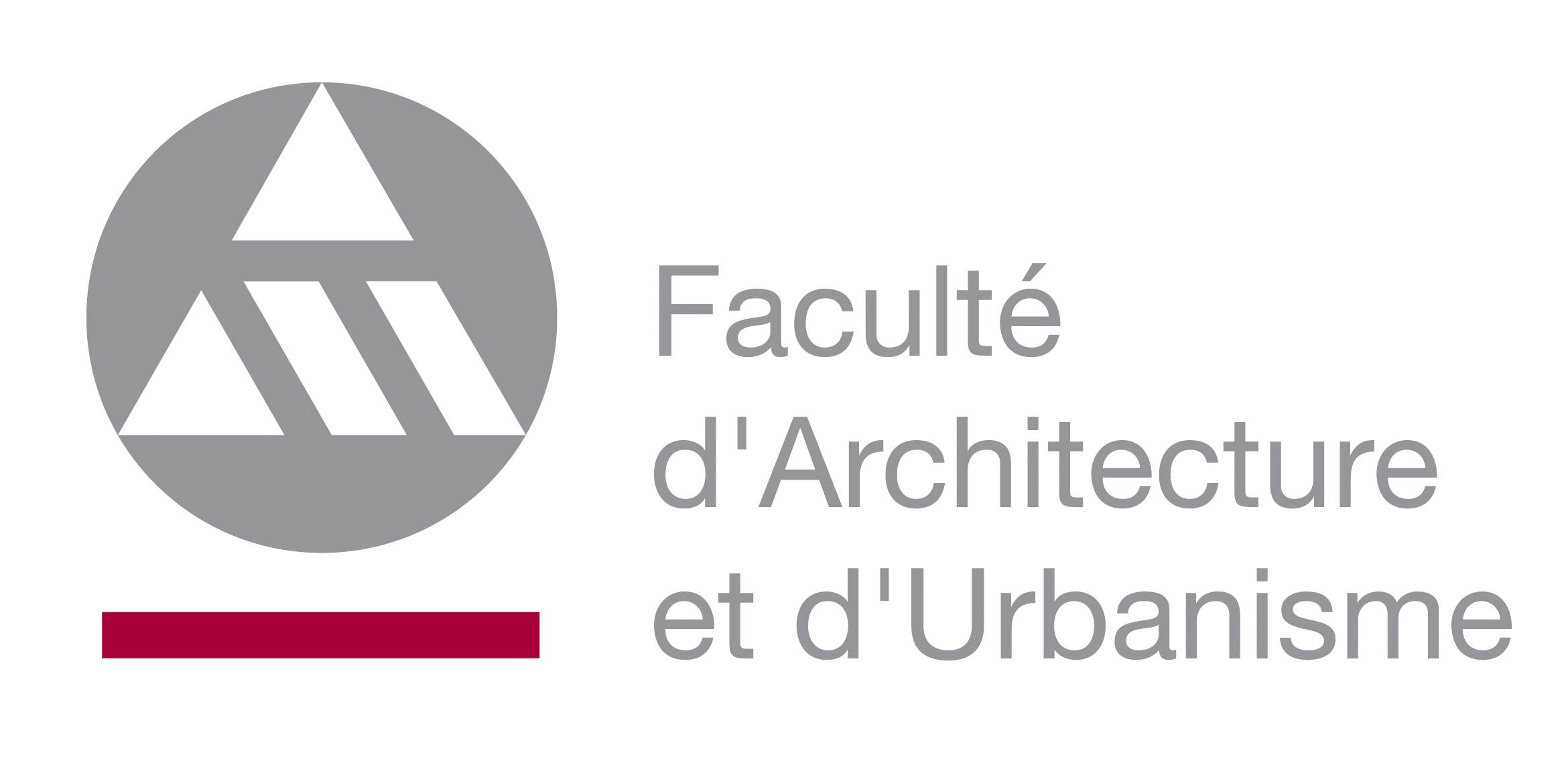 | Study programme 2021-2022 | Français | |
 | History and theories of Architecture and Urban Planning III | ||
Programme component of Bachelor's in Architecture à la Faculty of Architecture and Urban Planning |
| Code | Type | Head of UE | Department’s contact details | Teacher(s) |
|---|---|---|---|---|
| UA-B3-ARCHIT-004-M | Compulsory UE | DEPREZ Anne | A530 - Service d'Architecture et Société |
|
| Language of instruction | Language of assessment | HT(*) | HTPE(*) | HTPS(*) | HR(*) | HD(*) | Credits | Weighting | Term |
|---|---|---|---|---|---|---|---|---|---|
| Français | 18 | 6 | 0 | 0 | 0 | 2 | 2.00 | 1st term |
| AA Code | Teaching Activity (AA) | HT(*) | HTPE(*) | HTPS(*) | HR(*) | HD(*) | Term | Weighting |
|---|---|---|---|---|---|---|---|---|
| A-ARSO-003 | History of architecture III | 18 | 6 | 0 | 0 | 0 | Q1 | 100.00% |
| Programme component | ||
|---|---|---|
 | UA-B2-ARCHIT-003-M History and Theories of Architecture and Urban Planning II | |
Objectives of Programme's Learning Outcomes
- Instruct an architectural issue
- Build an architectural culture based on theoretical and critical knowledge and personal reading
- Coordinate the various disciplines related to architecture and urban planning transversely
- Contextualise their approach to architecture
- Develop a spatial response
- Master the means of oral, written and graphic expression
- Develop a project methodology integrating the various constraints related to the architectural discipline
- Implement an identified spatial response
- Adopt an applied scientific approach
- Adapt their structural, technical and formal choices according to the principles and values of project.
- Interact with all actors
- Integrate the different expectations of stakeholders related to architecture and urban planning
- Make choices
- Demonstrate ethical values
Learning Outcomes of UE
The history of architecture plays a leading specific role to familiriser him studying " future architect " in the practices of past.
The material history of architecture and of its constructive culture aims at forming at the student's historical detachment and architectural culture.
The course gives the student an architectural culture through the case study of various programs, structures, techniques and forms. He develops his faculty of judging as much constructive, artistic and cultural genius by the study of the typological invention (from the convenience of use to the spatial design), the technical innovation (from the tectonic stability to the architectural order) and creativity in composition and architectural theory (from module and rhythm to plastic beauty).
By setting the situation-problem of modern times architecture, the course deepens the particular questions such as the place, the constructive mode, the morphology, the structure, the luminosity, the spatiality, the decoration or the ornament. A field study of an architectural vestige aims to awaken the responsibility of the future architect facing this modern heritage.
A study of a modern day architectural production based on a treatise on architecture aims to awaken the future architect to the importance of architectural theory.
With a historical and contextual perspective on significant achievements, the student deepens his critical reflection on the design process and its implementation as well as on the codification of architectural theory and the cultural message.
Content of UE
Renaissance: Quattrocento in Florence, classical in Rome and Venetian; France and Spanish Pay-Bas.
Baroque: Rome and the southern Netherlands.
Classicism: France of Louis XIV
Rocks / rococo: France of Louis XV
Néoclassisme: France of Louis XVI and Belgium under Habsbourgs of Austria
Prior Experience
A.A. "History and theory of architecture and of town planning I and A.A."History and theory of architecture and of town planning II".
Type of Assessment for UE in Q1
- Presentation and/or works
- Written examination
Q1 UE Assessment Comments
Examination writes according to the visual documents (QCM with reasoned justification, incomplete text and structured and explicative presentation of a major building, analysis compared of two buildings). Written fieldwork analysis relating to a local modern architectural vestige using the course analysis tools.
Type of Assessment for UE in Q3
- Presentation and/or works
- Written examination
Q3 UE Assessment Comments
Examination writes according to the visual documents (QCM with reasoned justification, incomplete text and structured and explicative presentation of a major building, analysis compared of two buildings). Written fieldwork analysis relating to a local modern architectural vestige using the course analysis tools.
Type of Resit Assessment for UE in Q1 (BAB1)
- Presentation and/or works
- Written examination
Q1 UE Resit Assessment Comments (BAB1)
Examination writes according to the visual documents (QCM with reasoned justification, incomplete text and structured and explicative presentation of a major building, analysis compared of two buildings). Written fieldwork analysis relating to a local modern architectural vestige using the course analysis tools.
Type of Teaching Activity/Activities
| AA | Type of Teaching Activity/Activities |
|---|---|
| A-ARSO-003 |
|
Mode of delivery
| AA | Mode of delivery |
|---|---|
| A-ARSO-003 |
|
Required Reading
| AA | |
|---|---|
| A-ARSO-003 |
Required Learning Resources/Tools
| AA | Required Learning Resources/Tools |
|---|---|
| A-ARSO-003 | - Middelton R., Watkin D., Architecture du XIXe siècle (Histoire de l'architecture), Gallimard/Electa, 1993. - Murray P., Architecture de la Renaissance (Histoire de l'architecture), Gallimard/Electa, 1992. - Norberg-Schulz Ch., Architecture baroque (Histoire de l'architecture), Gallimard/Electa, 1992. - Norberg-Schulz Ch., Architecture baroque tardive et rococo (Histoire de l'architecture), Gallimard/Electa, 1994. |
Recommended Reading
| AA | |
|---|---|
| A-ARSO-003 |
Recommended Learning Resources/Tools
| AA | Recommended Learning Resources/Tools |
|---|---|
| A-ARSO-003 | Sans objet |
Other Recommended Reading
| AA | Other Recommended Reading |
|---|---|
| A-ARSO-003 | Not applicable |
Grade Deferrals of AAs from one year to the next
| AA | Grade Deferrals of AAs from one year to the next |
|---|---|
| A-ARSO-003 | Authorized |